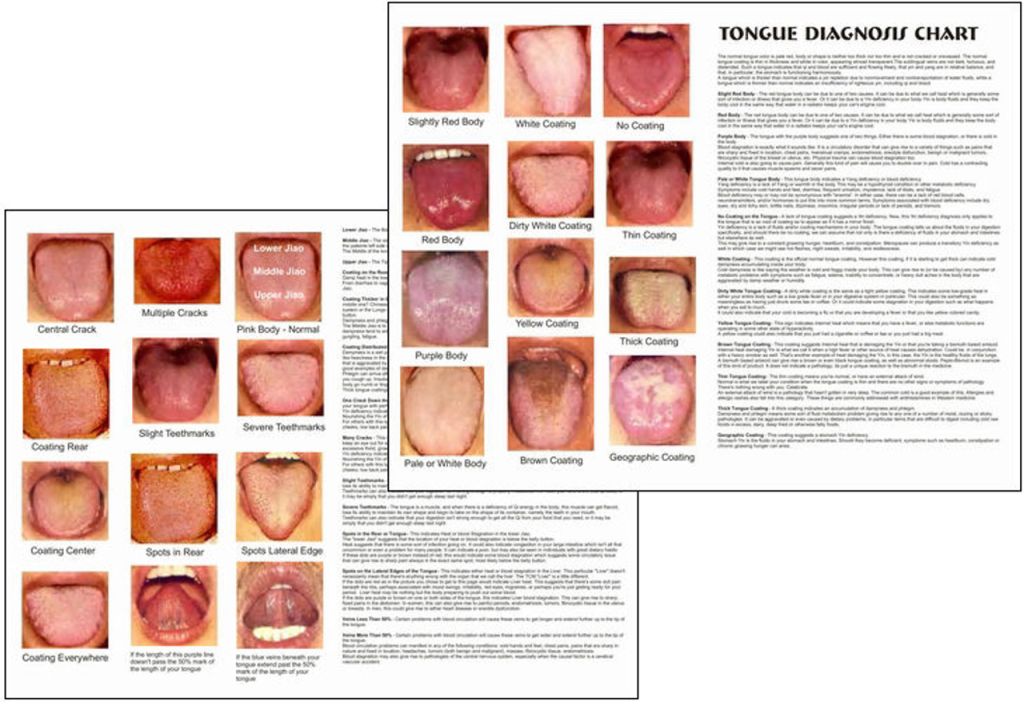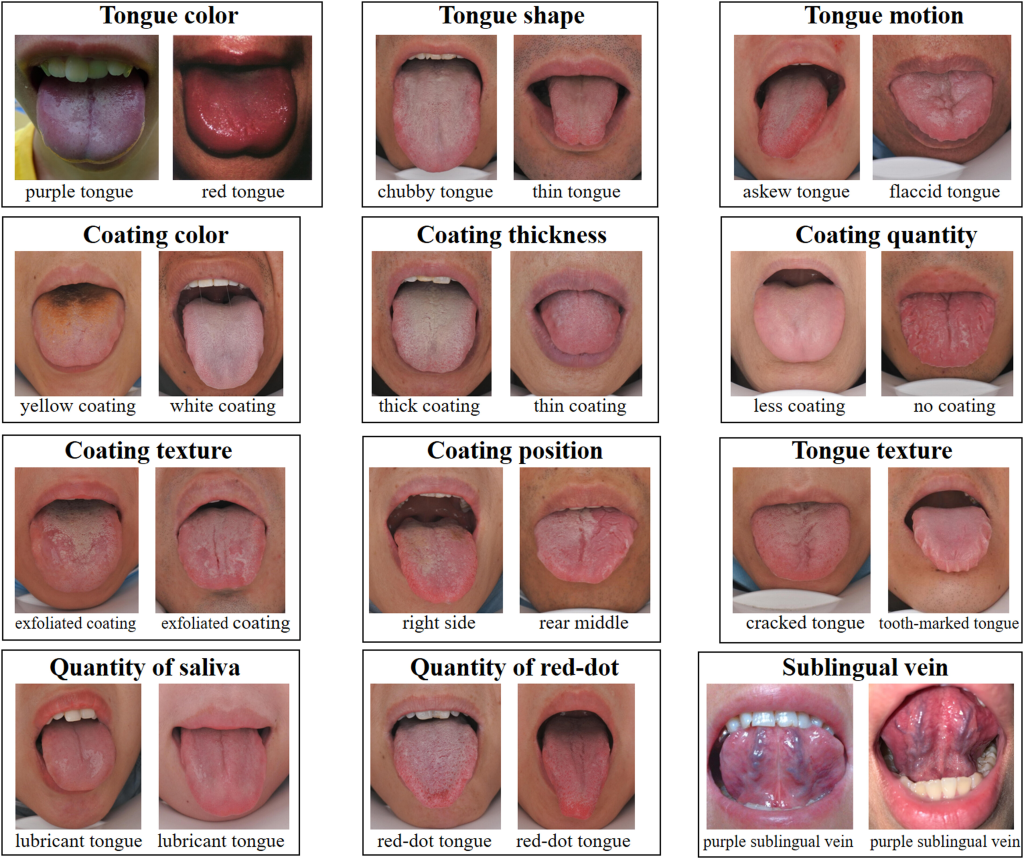Jivha Parikshan: (included in ashtavidh pariksha)
Observation – shape,colour,moisture,movement,coat/covering.

Examination
- Coating of tongue – shows the presence of ‘Aama’ due to “Agnimandhya”.
- Presence of ‘Aama’ in instestine or stomach – indication by coating in middle region of the tongue.
- Presence of ‘Aama’ in the large instestine – coating in the back of tongue.
JIVHA –Basic Introduction

Called as “Rasendriya” & organ of taste.
Formed by Jala mahabhuta – predominantaly Kapha, Rakta & Mamsa dhatu.
Heathy Tongue – it is suchi(clean) shalakshan (not too dry nor too moist).No dilation or distention of the veins beneath the tongue.
- Vata Prakruti – chilly,harsh,fissured.
- Pitta Prakurti – raddish, blue in colour ( strawberry like-scarlet fever etc).
- Kapha Prakurti – white,sticky & greasy.
- Tridosha – blakish appearance.
EXAMINATION

- Tongue 1/3 (front) – the lung ,heart,chest.
- Froth accmulatin in this area – lungs weakening, indicating a risk of respiratory illness including asthma,bronchitis and common cold.
- Deppresion in ant. middle region – (location of heart on tongue)
Indicates sadness, depression or mental illness.
- Tongue 1/3 (center) – liver, spleen,pancreas,stomach.
Gastritis & other organ abnormalities are indicated by small fracture or ulceration in this region.
- Tongue 1/3 (back) – the small and large intestine.
Coating on the back of tongue indicates ulcerative colitis and sever constipation.
- Dosha vitiation –
- Kapha vitiation – white or yellow-green tongue covered with a bad odor.
- Pitta vitiation – red or yellow-green tongue covered with a foul odor.
- Vata vitiation – brownish black tongue.
- Dwandhaj – mixed
- Sannipataj – Krishna, kantak (thorny),shuska
- Dhatu related –
- Rasa dhatu – dry tongue
- Rakta dhatu – pale tongue (i.e. Pandu (anemia))
- Extremely blue tongue –central cyanosis;description in ayureda in Madataya.
- Coated or cracked tongue – indigestion (maybe due to mental stress),loss of taste.
- Kledak kapha – situated in stomach & GIT ( associated with the production of rasa dhatu)
Related to liquid balance in body (dehydration or excessive sensation may cause low ph of gastric juice in stomach).
- Bodhak kapha – recognisation of flavor related with taste.
- Function – sensation of taste, speaking,swallowing ,saliva secreation (saliva&digestion enzyme production).
- Location – mouth and tongue
- Also maintain temperature of mouth
- Can be related with partial lobe of brain
- Provide support & energy to all kapha
- Vocal quality may attacted
- Treatment –bhedhak kapha is hyperactive – treatment is ginger, black pepper & long pepper maybe used as aid.
- Vata -> have paleness ->due to nutrition absorption.
Vyana vyau-> purple –blue appearance.
- A pale tongue indicates congestive cardiac failure and may be due to aggrevation of Avalamabaka kapha.
Jivha examination in different rogas
- Visham jwara – red/yellow/green coating -> due to predominance of pitta.
- Atisara – (due to agani mandhya & rasa dushti take place with Aama) can be correlated with serum electrolyte level of sodium & potassium.
- The presence of teeth marks along with margin is a symptom of malabsorption, poor digestion,inflammation of GIT etc.
- Based on appearance according to doshas-
| Dosha | Features |
| Vata | Small,short,thin dry & cracked |
| Pitta | Long norrow,pointed inflammed with ulceration and small projection |
| Kapha | Large swollen thick,soft and wet edges |
- Tongue colour – reflect condition of blood & body fluids ( hearts, spleen,lungs,kidney & liver)
- Shape – shows the state of blood and fluid and also persists long term pathological disease.
- Tongue coat – indication of organs( small intestine, large intestine, stomach,urinary bladder & gall bladder) and location of illness.
- Tongue thickness reflects excess or deficiency state (important indicator in acute condition)
- Tongue moisture reflects dryness & tongue movement reflects “Vayu”present or depletion
Examples – pale on sides ->lack of blood in liver.
Purple in center -> blood staging in stomach.
Thick yellow coat and rare -> dampness & heat intestine ,bladder & uterus.
VI. Area on tongue –
- Tip – heart
- Front – lungs
- Center – heart
- Inside-sides – gall bladder
- Edge-sides – liver
The rear -> first -> to intestine -> back to bladder & uterus,then at root -> kidney
VII. Observation –
out door light (or halogen light)
not sooner than ½ – 1 hours after eating
not held out more than 20 sec (it change it colour soon)
Analytical observation
- Tongue body colour – it indicates the conditions of blood ,fluid and the organ underlying pattern of discharge, long-term pathological discharmones & constitutional weakness.